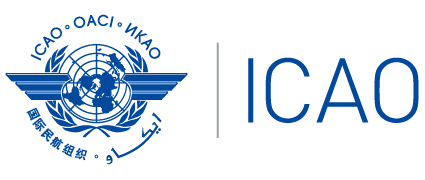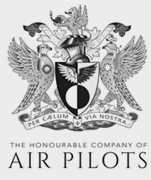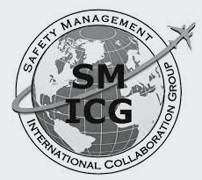A321, Abu Dhabi UAE, 2023
A321, Abu Dhabi UAE, 2023
Summary
On 29 April 2023, the flight crew of an Airbus A321 did not complete the intended touchdown at Abu Dhabi from the flare to land and initiation of a go-around resulted in a tail strike due to improper high pitch control input whilst the airspeed was still low and the configuration not correct. The mishandling arose from confusion by both pilots as to the aircraft air/ground status after touchdown and involved significant dual sidestick input with no transfer of control. Once established in the climb, the remainder of the subsequent circuit to land was completed without further event.
Flight Details
Aircraft
Operator
Type of Flight
Public Transport (Passenger)
Flight Origin
Intended Destination
Take-off Commenced
Yes
Flight Airborne
Yes
Flight Completed
Yes
Phase of Flight
Missed Approach
Location - Airport
Airport
General
Tag(s)
Landing Flare Difficulty,
Unplanned PF Change less than 1000ft agl
HF
Tag(s)
Inappropriate crew response - skills deficiency,
Ineffective Monitoring,
Procedural non compliance,
Dual Sidestick Input,
Ineffective Monitoring - SIC as PF
LOC
Tag(s)
Aircraft Flight Path Control Error,
Unintended transitory terrain contact,
Incorrect Aircraft Configuration
Outcome
Damage or injury
Yes
Aircraft damage
Minor
Non-aircraft damage
No
Non-occupant Casualties
No
Off Airport Landing
No
Ditching
No
Causal Factor Group(s)
Group(s)
Aircraft Operation
Safety Recommendation(s)
Group(s)
Aircraft Operation
Investigation Type
Type
Independent
Description
On 29 April 2023, Airbus A321, an Airbus A321 (A6-WZG) being operated by Wizz Air Abu Dhabi on an international passenger flight from Baku to Abu Dhabi as WAZ25GR failed to transition properly in day VMC from an initially intended landing on runway 31L at destination to a go around and a tail scrape occurred during rotation. Thereafter, the circuit and second approach resulted in a successful landing. Aircraft damage was relatively minor and none of the 208 occupants were injured.
Investigation
An Investigation was carried out by the UAE GCAA Air Accident Investigation Sector. The aircraft was equipped with two CVDRs which were removed and their data successfully downloaded. Data from the QAR was also made available. Recorded ATC communications data were also available.
It was noted that the 45 year-old Captain, who was designated as PM for the departure, had a total of 10,100 flying hours which included 2,112 hours on type. A total of 427 hours in command on type had followed his promotion to Captain in July 2022. The 25 year-old First Officer, who had joined the operator in August 2022, had a total of 1,280 hours flying experience of which 903 hours were on type. Both pilots had begun their duty by operating the outbound Abu Dhabi to Baku sector.
What Happened
The most recent METAR prior to beginning the approach gave the surface wind as 280° at 6 knots variable in direction between 250° and 310°, CAVOK and a temperature / dew point of 34° C and 3°C respectively. The pre-approach ATIS available to the crew was almost identical but did not include the variation in wind direction.
The ILS approach to runway 31L had proceeded normally and a landing clearance had been received with 11 nm to go along with a spot wind of 300° at 11 knots. Both APs were disengaged at 540 feet agl with just over a mile and a half to go and a further spot wind - 310° at 12 knots - followed soon afterwards. Thereafter, the Captain subsequently stated that thermals had been encountered. The runway threshold was crossed at 25 feet agl and over the next 23 seconds touched down on the main gear only before becoming airborne again prior to which a tailstrike occurred. Positioning to a second approach with the First Officer still acting as PF followed by a successful approach and landing on the same runway was then accomplished without further event.
The failure to complete the first landing involved a sequence of handling and control issues involving both pilots but without any transfer of control. It was investigated in detail because it culminated in the tailstrike and was preceded by the First Officer experiencing difficulty in maintaining the runway centreline. Crucially, during this time, there was confusion between the two pilots as to whether the aircraft had touched down or not and instances of simultaneous sidestick inputs by both pilots.
Two seconds after crossing the threshold, the thrust levers were retarded to the idle and after a further four seconds, both main gears touched down to the right of the runway centreline. Almost immediately, the First Officer selected the thrust levers to ‘REV MAX’ for little more than a second (as the pitch attitude reached a minimum of 0.4°) before moving them forward to ‘REV IDLE’. The right engine thrust reverser deployed for two seconds and the left engine thrust reverser for one second. Six seconds after main gear touchdown, the Captain began to use his sidestick whilst the PF First Officer was also doing so and without declaring it. At the same time both thrust levers were advanced to TOGA causing the spoilers to auto retract and the pitch angle to increase to 5.1°. The N1 reached about 30% as both pilots made small positive pitch inputs (which causes them to be summed) and the Captain said “keep it...keep it like this” but when the First Officer then significantly increased his input, the Captain “shouted ‘no’ five times as the A/THR became active”.
These calls were followed by the thrust levers being retarded from TOGA to ‘IDLE’ which resulted in the spoilers auto-deploying again. Almost immediately, the Captain then increased his pitch attitude input whilst the First Officer kept his around 3°. Without announcing his intention or taking over as PF from the First Officer, the Captain then selected TOGA thrust and the spoilers began to retract again as the First Officer asked “are we on the ground”. The pitch attitude increased beyond 4.4° as the airspeed reached its lowest recorded value of 108 KCAS and as it passed 8°, a “Dual Input” alert was automatically triggered.The First Officer released his sidestick after 7 seconds of dual input and the Captain’s pitch input reached almost 14°.

The main events during the first landing attempt. [Reproduced from the Official Report]
The Captain finally called “go around” and the recorded pitch attitude reached almost 10° as the airspeed began to slowly increase through 111 KCAS. The Master Warning then sounded for five seconds because the flaps and slats were not configured for takeoff. Three seconds after the Captain’s go around call, the aircraft became airborne again at 118 KCAS and with a pitch angle of almost 11° and the go around was thereafter normal.
Shortly after the aircraft became airborne, another aircraft which had been taxiing for departure during the rejected landing called GND to report a potential tail strike by the A321. Meanwhile, the TWR controller asked the reason for the go around and was told that it was because of an unstable approach. After the transfer to APP for the repositioning, the controller there asked the same question and was told it was because of “unstable low altitude over the runway”. During positioning for the second approach, the crew of the aircraft who had observed what they believed was a potential tail strike contacted the A321 crew directly and advised that the tail of the aircraft had “appeared very close to the ground during the go-around” but they “were uncertain whether this proximity (had) resulted in a tail strike or not”. The A321 Captain responded by subsequently checking that the aircraft pressurisation system was indicating normal function.
Following arrival on the parking gate, minor abrasion damage to the aft lower fuselage skin was found between frames 65 - 67 and stringers 42L - 42R and the drain mast assembly had been removed by surface contact with replacement required before release to service.
Why It Happened
It was determined that the Captain’s decision to go around was attributable to his “perception of the aircraft’s excess energy” which the Investigation believed “was due to his assumption that the aircraft was still airborne” and the fact that he had not checked the airspeed displayed on his PFD. Had he done so, he would have been unlikely to have initiated a premature rotation at about 3.5 degrees per second.
It was noted that whilst the aircraft had tail strike protection for landing “to restrict the pitch rate after touchdown” protection then remained active as long as the ground spoilers remained active. This meant that the initial dual input commands nose-up pitch were still subject to tail strike protection back stick command for two seconds until the Captain selected TOGA. At this point, tail strike protection was deactivated. The elevators quickly deflected upwards as both pilots sustained nose-their nose-up inputs and it was evident that “this upward deflection of the elevators, along with the pitch-up induced by the thrust increase from engaging TOGA (had) resulted in a significant increase in the pitch angle which exceeded the tail strike limit”. Although not appreciated at the time, a tail strike had occurred at that point.
The multiple formally documented Findings of the Investigation included, but were not limited to, the following:
- The variation of wind conditions prompted the First Officer, as the pilot flying (PF), to focus attention on maintaining the aircraft's track and heading, which most probably affected his situational awareness (in recognising whether or not) the aircraft had touched down and he inadvertently moved the thrust levers into reverse position.
- The Captain was primarily focused on the First Officer’s efforts to align the aircraft with the runway centreline which probably led to the omission of certain tasks that are typically part of the role of the pilot monitoring (PM).
- The Captain was not sufficiently aware of the aircraft state from the time it passed over the runway threshold until the decision was made to perform the go-around. This included the aircraft’s air/ground status, its position in relation to the runway surface and the energy indicated by its airspeed.
- When the ‘Retard’ auto-callouts were triggered as the Captain simultaneously called “retard”, the First Officer promptly moved the thrust levers to the idle position. Shortly after, he inadvertently moved the thrust levers to reverse without being aware of the action taken.
- The First Officer’s slightly excessive rudder inputs contributed to the fluctuations in the aircraft's heading and drift while on the runway.
- The PM Captain did not react to several important cues, including the final radio altimeter auto-callouts, retard auto-callouts, the First Officer’s adjustment of the thrust levers to idle and then (inadvertently) to reverse and he mistakenly assumed that the thrust levers were still set above idle even after his "retard" callout.
- Both flight crew members were initially unaware of the aircraft's touchdown after completing the flare manoeuvre.
- The PF First Officer struggled to align the aircraft with the runway centreline due to the wind variations, which resulted in his being unaware that he had moved the thrust levers to reverse or the aircrafts status and position.
- The First Officer decided to initiate a go-around since he was uncertain of the aircraft status and position on the runway.
- The First Officer attempted to initiate a go-around by pushing the thrust levers toward TOGA without making the necessary callouts and then reversed this action by pulling the thrust levers back to idle.
- The Captain took over the controls without the required callouts being made. He then decided to perform a go-around because he was unable to accurately determine the aircraft position on the runway.
- When determining and executing the go-around, the Captain based his decision to go around on his perception that the aircraft had high energy levels. He was unaware of the actual low energy (low airspeed) due to overlooking the need to verify the airspeed from his flight instruments.
- The go-around initiated by the Captain was not in accordance with SOPs because reverse thrust, unnoticed by both flight crewmembers, had been activated.
- During the initial stages of the go-around, there was confusion between the pilots as to who was PF and who was PM which was probably influenced by different perceptions of the air/ground status of the main landing gear prior to commencing it.
- There was a serious lack of effective CRM between the time when the aircraft passed over the runway threshold and when it had been established in the initial climb.
- The tail strike protection system was deactivated when TOGA was selected in accordance with a go-around manoeuvre and continuous nose up inputs by both pilots summed sufficiently to exceed the tail strike limit.
- The Operator's training program as detailed in the FCTM and the guidance provided in the FCOM did not include specific training or procedures for managing a go-around after touchdown on the basis that this would risk negative training by providing an SOP for an action which was prohibited once reverse thrust has been selected.
The Cause of the tail strike was formally documented as “the improper high pitch control application when initiating the go-around when the airspeed was still low”.
Six Contributory Factors were also identified:
- The gusty wind conditions during landing.
- The PM Captain’s failure to detect the height indications on the radio altimeter during the landing attempt or hear any ‘retard’ auto-callouts and the First Officer’s action in adjusting to idle thrust just before touchdown which was not noticed by either pilot.
- Following the touchdown, the PF First Officer inadvertently moving the thrust levers into the reverse position whilst remaining unaware of their action and the Captain not noticing this movement of the thrust levers.
- The erratic tracking of the runway centreline in respect of both heading and drift which resulted from the First Officer’s slight overuse of rudder inputs.
- The lack of clear communications between the two pilots, particularly the First Officer’s failure to announce the initiation of a go-around and the Captain’s subsequent cancellation of it and the Captain’s takeover of control which adversely affected CRM.
- The Captain mistakenly perceiving that the aircraft had excess energy without verifying the actual low airspeed before deciding to commence the go-around.
Safety Action taken as a result of the Investigation findings included but was not limited to the following:
Wizz Air:
- added new restrictions on pairing type-inexperienced Captains with type-inexperienced First Officers
- reminded its pilots of the importance of standard callouts especially during critical stages of flight
- reminded its pilots that a full stop landing is mandatory after selection of reverse thrust
- enhanced the scope of its simulator training in a number of relevant areas including adding a specific exercise to emphasise the issues surrounding the decision to reject a landing relative to flying a standard missed approach.
Airbus published training recommendations to support its operators in mitigating the risks associated with go-around manoeuvres executed at very low height above the ground applicable to A320, A330, A340, A350 and A380 aircraft based on analysis of go-around events reported to it.
A total of three Safety Recommendations were made as a result of the Investigation as follows:
- that Wizz Air Abu Dhabi includes go-around techniques for a low energy rejected landing close to the ground in the flight crew training programme and includes practice of this in pilot simulator training. [SR11/2024]
- that Wizz Air Abu Dhabi emphasises the importance of the role of the monitoring pilot including callouts to alert the handling pilot when appropriate. [SR12/2024]
- that Wizz Air Abu Dhabi continues to emphasise the CRM requirements outlined in the OM Part ‘D’ to pilots and continues to identify any CRM issues during pilot recurrent training and checking to address any necessary improvements in individual CRM skills and the overall effectiveness of their CRM system. [SR12/2024]
The Final Report was issued on 6 August 2024.






